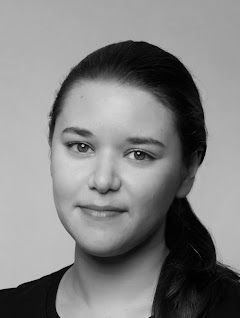Beat
General and breaking news, portraits and sports.
One Shot

“I think most photographers spend more time looking at what’s next instead of what they’ve done, so I don’t really have a favorite image. But there are certain ones that stick in my mind because of the way I was feeling at the time--like this image of thousands in Seattle protesting against a line of police and the National Guard after the death of George Floyd. I was struck by the stark contrast of the colorful umbrellas against the dark tones of the law enforcement uniforms, punctuated by the fact that Seattleites famously shun umbrellas. It felt like a visual marker of the intense division happening in America, and it spoke to the globalization of protest, as I saw the demonstrators begin to borrow tactics from Hong Kong, like utilizing umbrellas and traffic cones. The scale and longevity of the protests and of the police response, was unlike anything I have ever seen in Seattle.”
Profile
Growing up in the 90s, I remember playing with disposable film cameras, or swiping my parents’ point-and-shoot whenever I could. I got a cheap, little digital camera in the fifth grade that I took everywhere. I started taking photography classes in high school and was lucky to have a very supportive teacher, so I went out to get a Bachelor in Fine Arts at Seattle University. I also gained a lot from internships at the Seattle Post-Intelligencer and The Seattle Times. You can’t beat learning by doing.
The first real assignment I remember was for my college paper, covering a protest in the wake of the Seattle police shooting of John T. Williams, a Native American woodcarver, in 2010. I had never covered a protest before and felt a newfound sense of purpose and responsibility.
Photojournalism has been the key to a wider world: to many people, cultures and life experiences I never would have encountered otherwise. I’m a bit of an introvert and this career certainly got me out of my comfort zone. I am also grateful when I have the freedom to dig into news stories and follow them as they evolve over time, like our team’s work at the beginning of the coronavirus outbreak.
Covering the 2014 Oso landslide, which wiped out a community in rural Washington and killed 43 people, left a big mark on me. It was the state’s worst disaster since the Mount St. Helens eruption, and the first time I had covered a disaster. I had to learn a lot on the job: how to trust my gut and photograph tragedy with compassion. Most of the people I talked to were connected in some way to someone who had died. It always feels like an intrusion documenting people going through some of their worst times, but I am thankful when they allow us to do so.
Photojournalism isn’t about whether you can take a nice photo. It’s about how you put yourself in the position to get things done even in less than ideal circumstances. I respect most the colleagues I’ve seen hard at work doing things the right way, with compassion and self-awareness.
Our global audiences are both savvier and more distrustful than ever, but often when I take pictures, the audience I have in mind is the person or community affected that I’m photographing. What do they think of the way they’re portrayed. Images are important as a record, and help to elevate the voices of the communities you document. Photograph with conscience and consider the power dynamics on both sides of the camera.
The core value of photojournalism will always remain the same: it can compel visceral, immediate response. But our industry, like many others, is going through a bit of a reckoning, both financially and representationally. I’m hoping that the industry holds on long enough to allow itself to diversify.
Behind the Scenes

